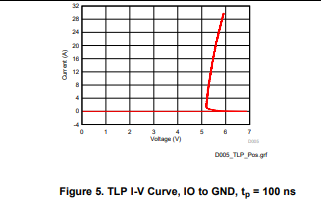Other Parts Discussed in Thread: TPD1E04U04, ESD351, ESDS312
Hello,
I have a data acquisition system for Wheatstone bridges. The sensors are external to the circuit, and connected to the ADC through an onboard connector. I experienced some ESD problems on the ADC and power lines on the circuit. Now I am redesigning my circuit, and I would like to add ESD protections on the ADC (and power) input lines.
I found some devices (ESD321 and others), but their clamping voltage is always higher than the ADC absolute maximum ratings. Usually, when I select a TVS diode I always check the following equation:
working voltage < VRWM < VBR < Vclamp < voltage absolute maximum rating
The ADC AMR is 5.3 V; I searched for alternate devices, but all have similar specs. ESD321 clamping voltage is 6.8 V, and other devices share similar clamping voltages. I thought about using a series resistor, but its power rating would be huge, and I'm not sure an ESD pulse could damage devices as it was a DC signal.
So, how to solve? Can AMR be relaxed when voltage on the pins has a very short duration?
Thanks in advance
Stefano


